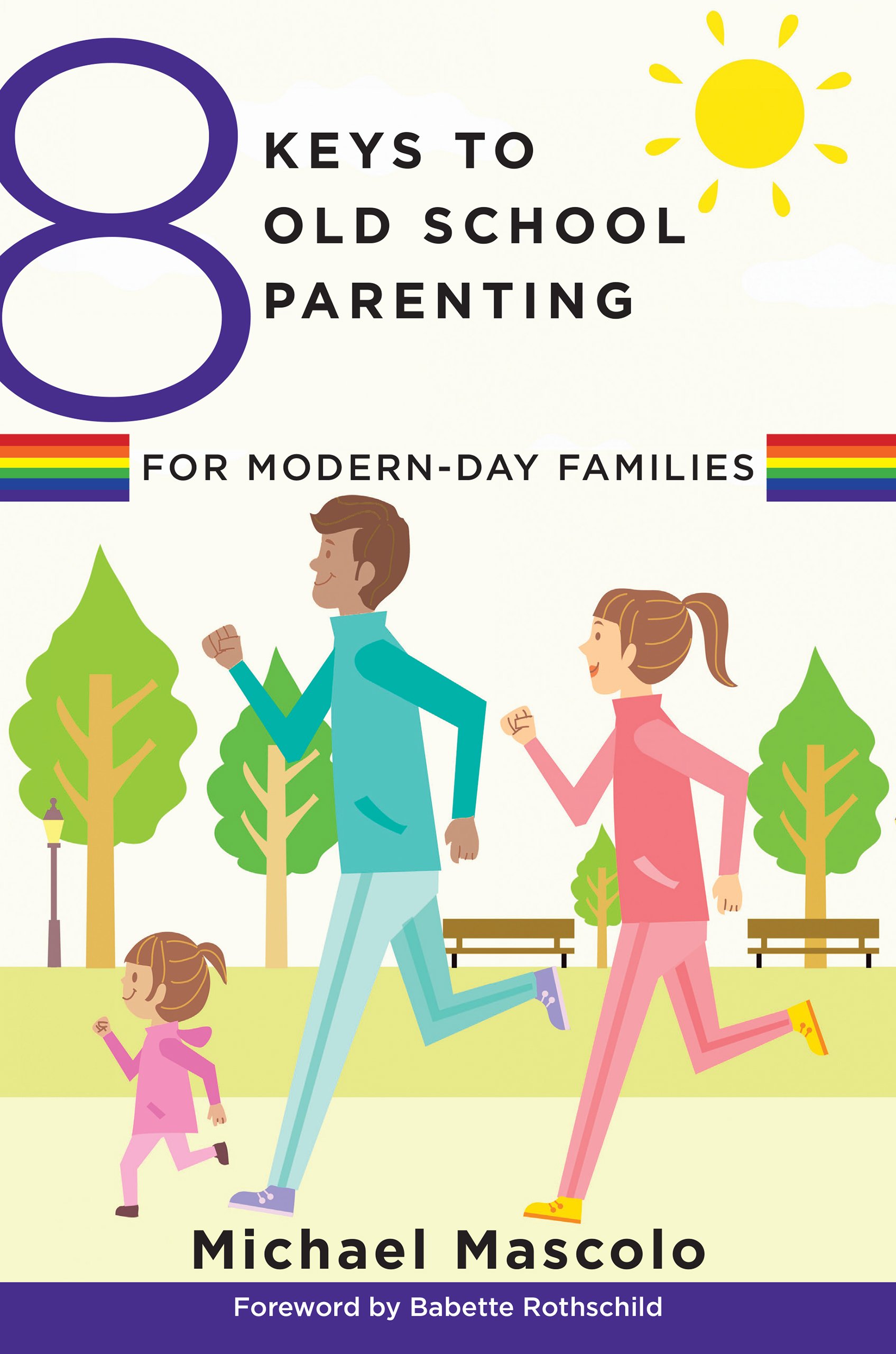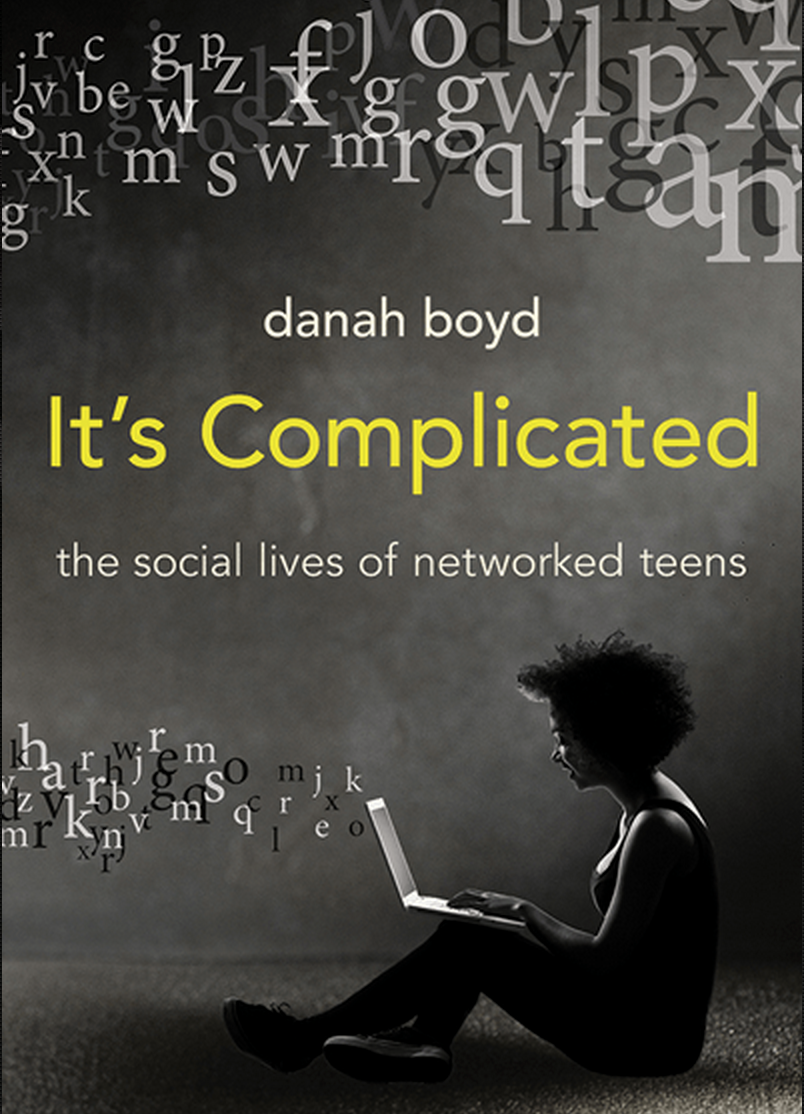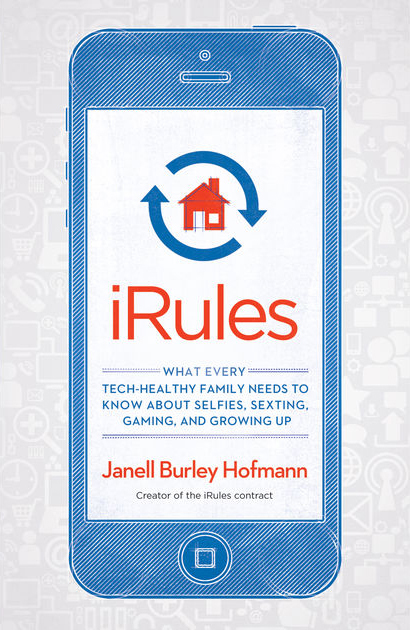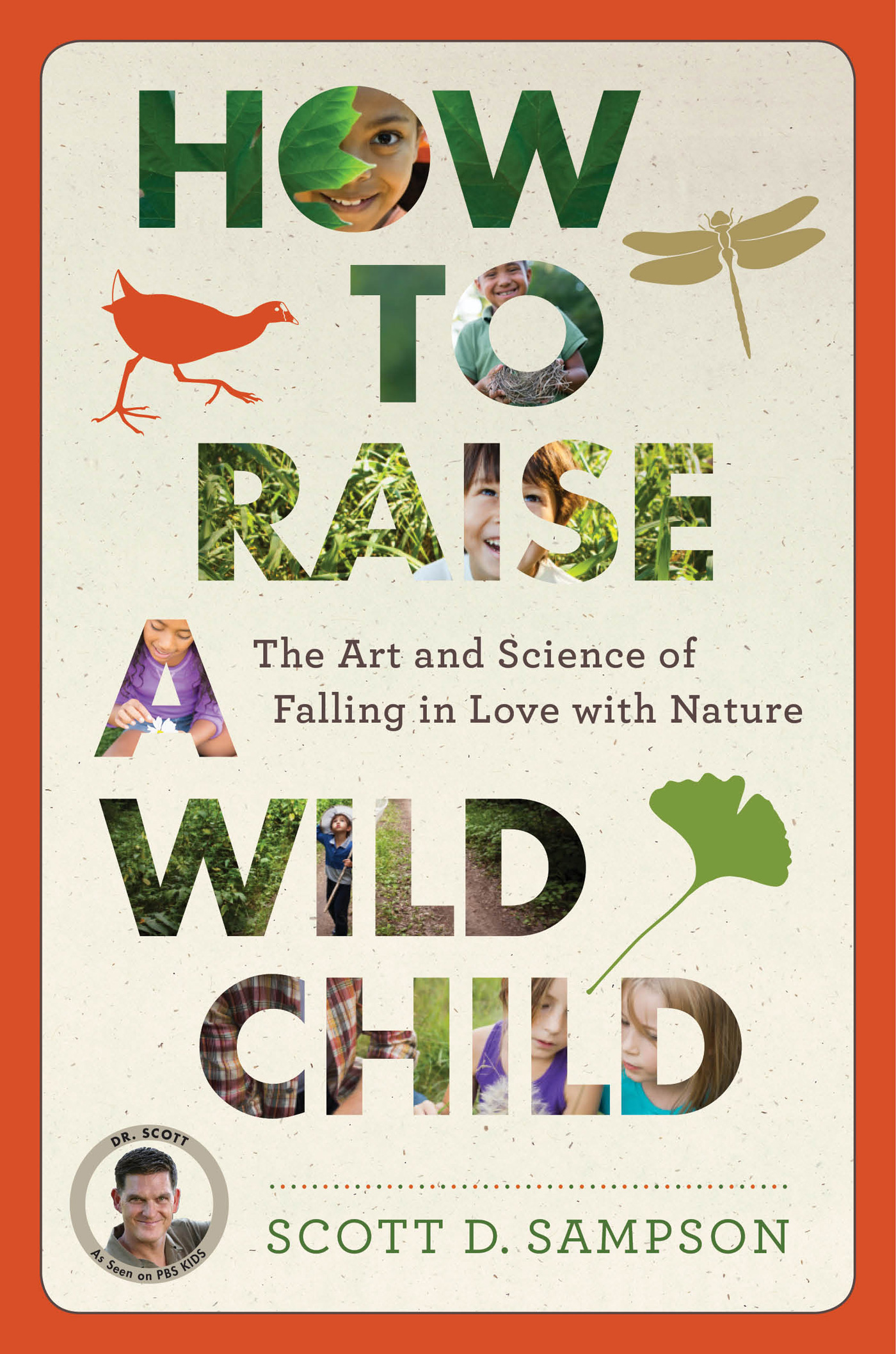Timeless Parenting in an iWorld
With each technological advance, life seems to get more complicated—especially for parents. Four books explore the challenges of raising children in the age of technology.
8 Keys to Old School Parenting for Modern-Day Families
Michael Mascolo. 2015. W.W. Norton & Company, New York. 288 pages.
It’s Complicated: The Social Lives of Networked Teens
danah boyd. 2014. Yale University Press, New Haven. 296 pages.
iRules: What Every Tech-Healthy Family Needs to Know About Selfies, Sexting, Gaming, and Growing
Janell Burley Hofmann. 2014. Rodale, New York. 288 pages.
How to Raise a Wild Child: The Art and Science of Falling in Love with Nature
Scott D. Sampson. 2015. Houghton Mifflin Harcourt, New York. 352 pages.
For thousands of years parents have been raising children with varying levels of success—whether leaning on punishment as their most trusted tool, trying out their own balance of “carrots and sticks,” hovering incessantly in a vain attempt to spare their children the pain of life’s inevitable trials and tribulations, or forgoing any kind of parental guidance whatsoever.
As we consider the many options and approaches, it can be tempting to believe that the parenting style that produced us is clearly the way to go; after all, look at how well we turned out. Yet we probably also realize that we have flaws and inconsistencies in our thinking and character, opening the possibility that maybe, just maybe, our parents didn’t have all the answers.
Then again, judging by the number of new parenting books that come out every year, perhaps neither do the so-called experts. How do we find our way through this jumble of often contradictory parenting advice? Is there a standard we can hold up against it—and against our own ideas that, precious as they are, may yet be colored by biases and misunderstandings arising from what we imagine were the lessons of our life experiences? Though considered a great teacher, even experience is open to misinterpretation.
While the world is continually changing and new technologies offer increasing challenges to parents, there must be timeless parenting principles we can apply no matter where modern trends take us, if only we can identify them. Let’s see how some recent books stack up as they attempt to do just that.
Old-School Attitude
In 8 Keys to Old-School Parenting, Michael Mascolo observes that parenting values have vacillated over the centuries between “my way or the highway” and permissiveness, with additional choices between these extremes. Those who study parenting approaches describe three general categories: authoritarian parenting is the my-way-or-the-highway approach, while permissive parenting is the other undesirable extreme; the balance, family researchers find, is achieved by authoritative parenting—being highly responsive to and emotionally supportive of one’s children while guiding, teaching and clearly communicating firm expectations and boundaries.
Mascolo’s readers may find themselves confronting an artificial choice between options he calls “old-school parenting” and “child-centered parenting.” Old-school parenting, as he describes it, is essentially authoritative parenting (that is, the balanced approach), while child-centered parenting is assigned the blame for everything from increased narcissism in children to a lack of emotional regulation.
There would certainly be good reason to object to approaches that hand over parental responsibilities to children, but few if any family professionals would argue for any such approach. When author and psychologist Kenneth Barish describes his approach as child-centered, it’s because he believes parents and children are often disconnected. He writes that discipline without empathy may produce short-term obedience while sowing long-term defiance, and that empathy without discipline is indulgence. The child-centered Barish therefore clearly advocates authoritative parenting, yet so does Mascolo with his supposedly opposite old-school, parent-centered approach. Both argue for limits, expectations and parental authority tempered by love, understanding, support and responsiveness.
Unfortunately the choice Mascolo presents leaves out family-centered approaches such as attachment parenting, which also advocates authoritative values, just as Mascolo does. Further, in which category do authoritarian approaches belong? They were undoubtedly used as often by “old school” parents as by modern parents, just as permissive approaches were and are. Either extreme can produce disastrous results.
Given the confusion inherent in Mascolo’s terms, and also given that we already have the standard, functional terms authoritarian, authoritative and permissive, he would have done well to avoid the fuzzier concepts and false dichotomies.
Fortunately he does use the more precise, standard terms when enumerating and discussing his eight keys. Taken on their own they are valid and useful concepts no matter how parents would describe their approach. His advice is to value your parental authority, cultivate your child’s character, apply discipline rather than punishment, motivate compliance (by reinforcing only appropriate behaviors), foster emotional development (by taking the child’s interests and feelings into consideration), solve problems, manage conflicts, and communicate effectively.
In the corresponding chapters, Mascolo offers practical ways for parents to maintain their authority while remaining responsive to their children’s emotional needs as they work toward success in each area. He generally stays on solid ground when he sticks to this practical parenting advice, although at times he misunderstands the research, particularly in the area of rewards. Failing to understand that rewards can be highly effective when used correctly, he dismisses a valuable tool by pointing only to the results of their misuse.
“Parents and children are not equals. Parents have legitimate authority over their children. . . . Parental guidance is essential from preschool through high school and beyond.”
Readers will benefit most from his focus on authoritative parenting. “Children need both guidance and support,” he states, based on research showing that children of permissive parents as well as children of authoritarian parents tend to be more withdrawn and less independent, self-controlled and competent than children of authoritative parents. “It may seem surprising that children of authoritarian and permissive parents tend to show similar profiles of behavior,” he writes. Narcissism is another such behavior (although many, including Mascolo, assume it results primarily from permissive parenting). Such similarities occur from seemingly opposite environments because in neither situation is a child receiving both important aspects of parenting. As Mascolo puts it, “Authoritarian parents provide direction without the responsive support; permissive parents provide support without direction.” (In case you’re curious about your own parenting profile, Mascolo includes a self-assessment with an answer key to determine whether you tend toward authoritarian, permissive or authoritative.)
“Authoritative parenting,” Mascolo concludes, “is old-school not because it is old-fashioned, but because it has passed the test of time. It reflects a series of time-honored truths.”
What are these time-honored truths? In his view they boil down to passing on moral virtues such as courage, compassion, gratitude, trustworthiness and effort. But Mascolo declines to identify a comprehensive and authoritative moral code, noting that “in the absence of socially shared moral beliefs, it can be difficult for parents” to settle on a source. “This need not be an intractable problem,” he suggests. “All parents have an intuitive sense of what they want for their children, what they feel is right and wrong, and what it means to be a good person” (emphasis added). If we haven’t developed our moral path yet, he says, we cultivate what we think may be virtues and test them out. If they work, we can keep them; if they fail, we can revise them. If our morality comes into conflict with the morality of others, we use collaborative problem-solving skills to either create “novel values” or coordinate our interests and values with others.
This might almost be a satisfying answer were it not followed up 10 pages later by the eminently reasonable but seemingly contradictory assertion that “moral character is not something that can be found by simply looking within one’s self.” To be fair, Mascolo doesn’t mean this to be a contradiction. Nevertheless, if we begin with an intuitive sense of morality, which we then test, essentially we are looking within ourselves to find the source of our morality. Does every family therefore need to reinvent the wheel by trial and error? If, as he asserts, there are time-honored truths on which to base our parenting, then why should we need novel values when so-called moralities come in conflict—for instance, when technological advances place us at odds with our children in a way that our own parents never had to take into account?
Timeless Values for Novel Challenges
Two books that address this question are Janell Burley Hofmann’s iRules and danah boyd’s (“I really don’t like when people remove the ‘h’ or capitalize my name—it’s not how i’ve chosen to identify”) It’s Complicated.
Hofmann is a parenting coach and mother of five who drew up a contract with her 13-year-old son detailing some basic rules for use of his new iPhone. After she posted it on her Huffington Post parenting blog, it was tweeted by Arianna Huffington herself and went viral overnight. “The following morning,” she writes in iRules, “less than twenty-four hours after it posted, the crew of Good Morning America is in my kitchen for an interview.” Hofmann acknowledges that technological advances offer challenges that our own parents didn’t face, but unlike Mascolo she doesn’t suggest they must lead to increased moral uncertainty or a need for novel values.
“This book is a manifesto on parenting in a technological age. The best way to deal with the present and future challenges is to return to the parenting basics.”
“The pitfall many parents succumb to is the belief that the rules have somehow changed, just because technology has,” says Hofmann. “But that isn’t the case. Instead, we just need to apply the same parenting strategies and beliefs to the technology! Parents must identify and outline the principles and values that underlie their parenting cornerstones and then adapt and apply those to technology.” The parenting cornerstones Hofmann recommends include respect, responsibility, and encouragement to live fully.
Boyd echoes these generalities, focusing mainly on how they apply to young people as they use technologies for social engagement. The rules aren’t different simply because there are novel “publics” in which we interact, she suggests; but how to apply timeless values (whatever those may be) might not be immediately apparent in every circumstance. “Rather than resisting technology or fearing what might happen if youth embrace social media,” she writes, “adults should help youth develop the skills and perspective to productively navigate the complications brought about by living in networked publics.” In boyd’s view, the ideal manifestation of these skills would reflect tolerance and respect for others, with the rules for what is or is not acceptable currently being shaped by social norms.
Like boyd, Hofmann does not resist technology but argues passionately for balancing networked and real-life publics. “Live Fully,” she titles one section; “Have fun, play, go outside, be silly, be willing to make mistakes, create, imagine, be curious, seek, serve, give back.” This lesson came home to her during a period when the whole family’s daily schedule was particularly chaotic. Nerves were frazzled, tempers frayed, and it was clearly time for some down time. Hofmann and her husband planned a family day at the beach, and everyone agreed to leave their phones in the car. At the end of the day, the sense of having been fully present together as a family moved even the kids to call for a repeat experience as soon as possible. “Whenever we are taken away from the present moment, we lose our footing,” she observes. “When we get into this frazzled space, I know the technology needs to take a seat in the way back of our lives, and carving out that space helps all of us.”
Is Hofmann overthinking the need to have rules about social technologies like smartphones and social media? She comes to the conclusion that she is not. As boyd points out, such technologies offer young people opportunities for learning how to successfully navigate relationships, and they’re not likely to go away anytime soon. It’s difficult to argue as Hofmann calls on parents to exploit their unique perspective, having known what the world was like both before and after the digital revolution. “We can choose to preserve pieces,” she reminds us. “We can protect childhood and foster experiences—real ones.” Fittingly, her final chapter is titled “Eyes Up and Heart Open.” The corresponding iRule reads, “See the world happening around you. Stare out a window. Listen to the birds. Take a walk. Talk to a stranger. Wonder without googling.”
Eyes Up and Heart Open
Admittedly parents may feel challenged in fostering an “eyes up” focus. How many have echoed Hofmann’s words to their own children: “Have fun, play, go outside”? Drawing up a set of iRules is certainly one way to make sure young people have time to live fully. But even with rules, many just don’t have the same access to the outdoors that their parents did or haven’t been given opportunities for the “real” childhood experiences Hofmann refers to. Could part of the problem be that parents have forgotten the importance of giving them enough time and space for unstructured play, particularly of the outdoor variety, to help them develop a craving for such experiences?
Scott D. Sampson, host of the children’s show Dinosaur Train, suggests this may be the case. In his 2015 book How to Raise a Wild Child: The Art and Science of Falling in Love with Nature, he allows that children are susceptible to the magnetic pull of technology, “yet blaming technology is far too simplistic.” According to the research he presents, overblown fears may also be a factor: fear that children will be abducted or injured if they’re allowed to play outdoors unattended, or that they will fall behind their peers if their schedules aren’t crammed with sports, various lessons, tutoring, or other structured activities. Another factor is rapid urbanization throughout the developed world.
Whatever the cause, between 75 and 80 percent of parents admit that their children no longer regularly spend time in nature. Still, Sampson believes parents can do a great deal to engage their children emotionally with the natural world. “The best way to get a child outside is to go with them,” he states flatly, quoting a slogan of the Child and Nature Alliance of Canada. This makes all the sense in the world, because parents need a deeper connection with nature every bit as much as children do. But parents and children also need deeper connections with one another, and surroundings that include plants and natural greenery enhance the states of mind and body that promote these connections. As a scientist himself, Sampson is careful to share the research supporting such health benefits and offers practical, evidence-based ideas that parents, as well as urban communities, can implement.
He argues that converting traditional play areas into natural playgrounds may be one of the best ways urban communities can help children fall in love with nature: replace monkey bars, swings and slides with logs, boulders, trees, paths, hills and quiet places for contemplation in order to engage children’s imaginations and engender a sense of wonder and place.
“The beauty of natural playgrounds is that they tap directly into children’s passions. In traditional playspaces constructed of metal and plastic, decisions about what to play are made by the designers.”
Natural playgrounds encourage cooperation and reduce bullying, vandalism and aggressive behavior, especially when there is a tree canopy. Children are more engaged and play longer while improving their balance, agility and motor skills, perhaps because natural elements offer more graduated challenges than the designed, artificial elements in traditional playgrounds. Interestingly, statistics show that serious injuries (such as broken bones) occur much more often on traditional playgrounds than in natural areas.
Beyond the benefits to the physical and mental health of parents and children, as well as to their relationships, Sampson insists that “there’s another, equally compelling reason for us to reconnect with nature”: the well-being of nature itself. While there are many ideas about how to solve the planet’s eco-crisis, Sampson contends that the primary sustainability issue is a matter of mind and education. The problem is the disconnect between humans and nature, he says; we tend to see destructive causes as being “out there” in the environment because we aren’t connected enough to realize that nature doesn’t exist as a subset of the economy. We (and our economy as an extension of us) are a part of nature.
Sampson agrees with those who argue that “even if every adult in the industrialized world became a vegetarian, took three-minute showers, and reduced their garbage nearly to zero; even if we all installed solar panels, rainwater capture systems, and compact fluorescent bulbs; even if we converted to cloth shopping bags, mass transit, and ate only local and organic, . . . we’d still be hell-bound. Exterior transformations . . . must be accompanied by an interior revolution in thinking.”
What sort of revolution, though? Sampson suggests that the human perception of having dominion over the natural world causes us to feel entitled to exploit its resources. While this idea is often traced to the Bible, a closer look at Genesis 1:28 suggests that it has been largely misinterpreted. In that passage, the newly created humans were instructed to “be fruitful and multiply; fill the earth and subdue it; have dominion over the fish of the sea, over the birds of the air, and over every living thing that moves on the earth.” Looking at this with the understanding that we have become disconnected from nature may help us to understand “dominion” not as license to use, misuse and exploit but as wise, compassionate, respectful stewardship.
In fact, the timeless value of respect is common to each of the four books considered here, although not all offer concrete guidelines for meeting that moral obligation. Mascolo apologizes for his omission by pointing out that society lacks a basis of shared moral beliefs. And while Sampson delivers concrete tips for teaching children respect for the environment, when it comes to teaching respect for other human beings, we seem to have greater difficulty setting down a moral code.
Yet if it’s timelessness we’re after, there are ancient sources that can be mined for principles governing interpersonal relationships, perhaps the most widely read being the Bible. Considering that one of its fundamental stated purposes is to define how to love one’s neighbor (Matthew 22:39–40), it seems a reasonable place to look for timeless values to support parenting practices and against which to evaluate parenting advice from other sources, whether or not one considers oneself religious.
What might “Eight Keys to Timeless Parenting” look like if we were to take advice from these four books and hold them against that source of enduring principles? Chances are, no matter how attached we may be to the way we were raised, or to the way we are raising our own children, discovering the relevance of this resource to modern parenting would challenge a number of preconceived notions.




